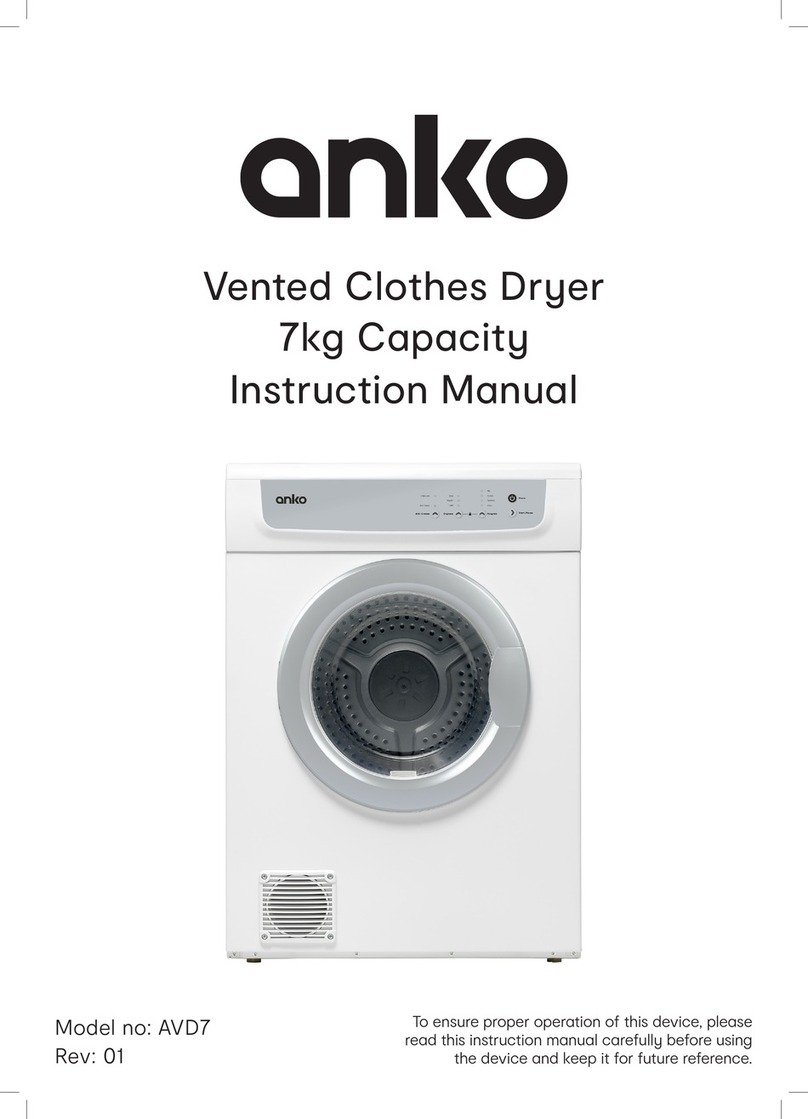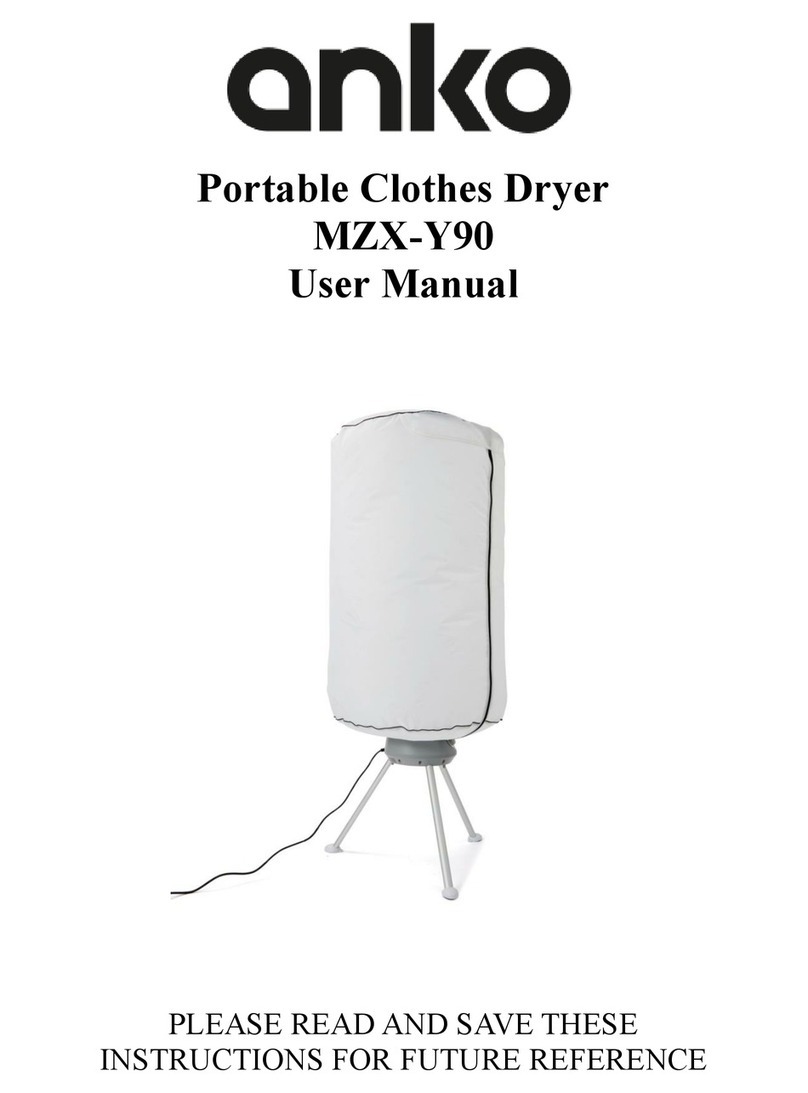
7
Some guidelines for various fabric types:
• Permanent press and synthetics - take out as soon as the dryer stops to reduce wrinkles.
• Woollen articles - not recommended. Pull them to their original shape, then dry them flat.
Vented dryers can shrink woollen articles.
• Woven and loop knit materials - may shrink, by varying amount, depending on their quality.
Do not use the “Extra” Dryness setting for these fabrics, Always stretch them out immediately
after drying.
• Fibre or leather materials - always check the manufacturer’s instructions.
• Baby clothes and night gowns - acrylic clothing or sleepwear use only on the “Light”
Dryness setting.
• Rubber and plastics - Do not dry any items made from or containing rubber or plastics, such as
aprons, bibs, babies’ water proof napkins, curtains, tablecloths, shower caps, clothes fitted with
foam rubber pads, pillows, galoshes, or rubber coated tennis shoes.
• Fibreglass - not recommended, glass particles left in the dryer could be picked up by your
clothes the next time you use the dryer and irritate your skin.
Caution! Fabric softeners or similar products should not be used in a tumble dryer to eliminate the
eects of static electricity unless this practice is specifically recommended by the manufacturer
of the fabric softener or product.
Note We strongly advise against the use of fabric conditioners of the sheet type that are added to
the clothes in the drum. These products may lead to rapid blockage of the lint filter and inecient
operation of your dryer.
Unpacking
During transportation, protective packaging was used to protect the appliance against any
damage. After unpacking, please dispose of all elements of packaging in a way that will not cause
damage to the environment. All materials used for packaging the appliance are environmentally
friendly; they are 100% recyclable and are marked with the appropriate symbol. Check with your
local council on which packaging elements can be recycled kerbside and which may need to be
disposed of at your local recycling drop o centre.
Tip! Soft plastics can be recycled at most major grocery retailers. Polystyrene (EPS) foam may
not be accepted by your local council for recycling- check http://epsa.org.au/ for details of your
local EPS recycler.
Caution! During unpacking, the packaging materials (polythene bags, polystyrene pieces, etc.)
should be kept out of reach of children.
DISPOSAL
Old appliances should not simply be disposed of with normal household waste but should be
delivered to a collection and recycling centre for electric and electronic equipment. A symbol
shown on the product, the instruction manual or the packaging shows that it is suitable for
recycling.
• Materials used to manufacture the appliance are recyclable and are labelled with information
concerning this. By recycling materials or other parts from used devices you are making a
significant contribution to the protection of our environment.
• Information on appropriate disposal centres for used devices can be provided by your local
council or authority.
Safety Instructions (Continued)





























